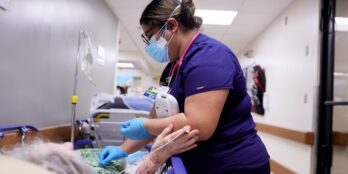
3 Metrics to Ensure Your Skilled Nursing Facility Is Meeting Expectations
 3 min
3 min
The number of skilled nursing providers leveraging technology is continuing to increase, along with the amount of data being collected. From dietary requirements, to medication management, to fall incidents — discerning which information your leadership team should focus on can be a challenge.
When it comes to keeping your doors open, and improving the financial health of your facility, there are three metrics you must pay close attention to:
1. Five-Star Rating
This metric focuses on the information that prospective residents want to know. Published online, consumers can quickly and easily access insights on your quality ratings and resident health outcomes. The higher the rating, the better your facility’s reputation amongst consumers and care partners. In fact, your star rating must be a three or higher in order to accept patient referrals from hospitals and become a preferred care partner. As care networks continue to narrow, it’s essential for skilled nursing facilities to demonstrate their ability to drive positive health results in order to attract referrals. By keeping a close watch in real-time on the data points that impact this metric, providers can intervene early and address the problem before it lowers their CMS-published star rating.
2. Readmission Rate
This is one of the first metrics that referring hospitals look at when searching for the right post-acute care facility for their discharged patients. Over the next three years, 85% of C-suite leaders plan to expand their partnership with local post-acute care providers, and your facility’s ability to reduce readmission rates, and keep them low, is the quantifiable proof that your team is delivering the right care, at the right time. Because there are a variety of factors that could contribute to hospital readmission, incorporating data analytics into your operations to enable identification of residents triggering negative outcomes and investigation into poorly performing facilities is a game changer. The earlier you can identify an issue, the earlier you can investigate and determine the cause — and then address it accordingly.
3. Average Length of Stay
This metric is a great measure of efficiency in quality care. It’s important for facilities to identify the ‘sweet spot’ between the initial resident assessment cost, which is typically covered within the first three days, and the time it takes to discharge the resident. Facilities with lower Average Lengths of Stay and great readmission rates make the best partners in bundled payment scenarios. Bundled care payments are tied to the length of a specific episode of care, which may be 30, 60, or 90 days, and residents must be successfully discharged to the community within those episode limits for the facility to get paid. By keeping a close eye on your average length of stay metric, facility leaders gain a better sense of how quickly and effectively your team can improve resident health outcomes. This helps to identify any ‘problem areas’ in terms of administering care and allows for them to be addressed.
Monitoring these three important metrics will help ensure your skilled nursing facility is meeting expectations both internally and externally.
To learn more, watch our webinar:
More from Russ DePriest: What to Consider When Selecting the Right Software Vendor Partner
June 28, 2017






